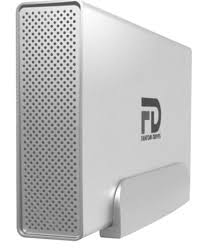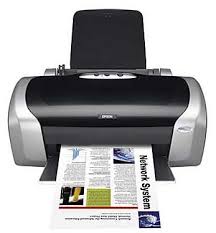 File Compression is the process of encoding information using fewer bits (or other information-bearing units) than an unencoded representation would use, through use of specific encoding schemes.Compression is useful because it helps reduce the consumption of expensive resources, such as hard disk space or transmission bandwidth. On the downside, compressed data must be decompressed to be used, and this extra processing may be detrimental to some applications. For instance, a compression scheme for video may require expensive hardware for the video to be decompressed fast enough to be viewed as it is being decompressed (the option of decompressing the video in full before watching it may be inconvenient, and requires storage space for the decompressed video).
File Compression is the process of encoding information using fewer bits (or other information-bearing units) than an unencoded representation would use, through use of specific encoding schemes.Compression is useful because it helps reduce the consumption of expensive resources, such as hard disk space or transmission bandwidth. On the downside, compressed data must be decompressed to be used, and this extra processing may be detrimental to some applications. For instance, a compression scheme for video may require expensive hardware for the video to be decompressed fast enough to be viewed as it is being decompressed (the option of decompressing the video in full before watching it may be inconvenient, and requires storage space for the decompressed video).
 Head Crash is a hard-disk failure that occurs when a read–write head of a hard disk drive comes in contact with its rotating platter, resulting in permanent and usually fatal damage to the magnetic media on the platter surface.
Head Crash is a hard-disk failure that occurs when a read–write head of a hard disk drive comes in contact with its rotating platter, resulting in permanent and usually fatal damage to the magnetic media on the platter surface.
 Internet Hard Drive is to offer a means of accessing your computer files (pictures, documents, music, videos, etc.) from any computer, as long as that computer has access to the Internet. Similar to depositing money into your bank account, and later withdrawing that same money from any ATM machine, an Internet hard drive will allow you to "deposit" your computer files into a remote hard drive, and then later access those very same files from any other computer.
Internet Hard Drive is to offer a means of accessing your computer files (pictures, documents, music, videos, etc.) from any computer, as long as that computer has access to the Internet. Similar to depositing money into your bank account, and later withdrawing that same money from any ATM machine, an Internet hard drive will allow you to "deposit" your computer files into a remote hard drive, and then later access those very same files from any other computer.
 Optical Disc Drive is a disk drive that uses laser light or electromagnetic waves near the light spectrum as part of the process of reading or writing data to or from optical discs. Some drives can only read from discs, but recent drives are commonly both readers and recorders. Recorders are sometimes called burners or writers. Compact discs, DVDs, and Blu-ray discs are common types of optical media which can be read and recorded by such drives.
Optical Disc Drive is a disk drive that uses laser light or electromagnetic waves near the light spectrum as part of the process of reading or writing data to or from optical discs. Some drives can only read from discs, but recent drives are commonly both readers and recorders. Recorders are sometimes called burners or writers. Compact discs, DVDs, and Blu-ray discs are common types of optical media which can be read and recorded by such drives.
 Solid State Storage is a nonvolatile, removable storage medium that employs integrated circuits (ICs) rather than magnetic or optical media. It is the equivalent of large-capacity, nonvolatile memory. Examples include flash memory Universal Serial Bus (USB) devices and various proprietary removable packages intended to replace external hard drives.
Solid State Storage is a nonvolatile, removable storage medium that employs integrated circuits (ICs) rather than magnetic or optical media. It is the equivalent of large-capacity, nonvolatile memory. Examples include flash memory Universal Serial Bus (USB) devices and various proprietary removable packages intended to replace external hard drives.
 Ergonomic keyboard is a computer keyboard designed with ergonomic considerations to minimize muscle strain and a host of related problems. It was designed to to relieve some of that stress and provide a more comfortable platform for typing.Ergonomic keyboard designs also help to relieve sometimes painful conditions such as carpal tunnel syndrome and repetitive stress injury that results from extended keyboard usage. These specially designed, contoured keyboards are created with comfort in mind, and are often recommended by therapists and health care professionals.
Ergonomic keyboard is a computer keyboard designed with ergonomic considerations to minimize muscle strain and a host of related problems. It was designed to to relieve some of that stress and provide a more comfortable platform for typing.Ergonomic keyboard designs also help to relieve sometimes painful conditions such as carpal tunnel syndrome and repetitive stress injury that results from extended keyboard usage. These specially designed, contoured keyboards are created with comfort in mind, and are often recommended by therapists and health care professionals.
 Ink-jet Printer is a type of computer printer that creates a digital image by propelling variable-sized droplets of ink onto paper. Inkjet printers are the most commonly used type of printer and range from small inexpensive consumer models to very large professional machines.
Ink-jet Printer is a type of computer printer that creates a digital image by propelling variable-sized droplets of ink onto paper. Inkjet printers are the most commonly used type of printer and range from small inexpensive consumer models to very large professional machines.
 Laser Printer is a common type of computer printer that rapidly produces high quality text and graphics on plain paper. As with digital photocopiers and multifunction printers (MFPs), laser printers employ a xerographic printing process but differ from analog photocopiers in that the image is produced by the direct scanning of a laser beam across the printer's photoreceptor.
Laser Printer is a common type of computer printer that rapidly produces high quality text and graphics on plain paper. As with digital photocopiers and multifunction printers (MFPs), laser printers employ a xerographic printing process but differ from analog photocopiers in that the image is produced by the direct scanning of a laser beam across the printer's photoreceptor.
 Magnetic-ink character reader(MICR) is a character recognition technology used primarily by the banking industry to facilitate the processing of cheques. The technology allows computers to read information (such as account numbers) off of printed documents. Unlike barcodes or similar technologies, however, MICR codes can be easily read by humans.
Magnetic-ink character reader(MICR) is a character recognition technology used primarily by the banking industry to facilitate the processing of cheques. The technology allows computers to read information (such as account numbers) off of printed documents. Unlike barcodes or similar technologies, however, MICR codes can be easily read by humans.
 Optical-character recognition(OCR) is the mechanical or electronic translation of scanned images of handwritten, typewritten or printed text into machine-encoded text. It is widely used to convert books and documents into electronic files, to computerize a record-keeping system in an office, or to publish the text on a website. OCR makes it possible to edit the text, search for a word or phrase, store it more compactly, display or print a copy free of scanning artifacts, and apply techniques such as machine translation, text-to-speech and text mining to it. OCR is a field of research in pattern recognition, artificial intelligence and computer vision.
Optical-character recognition(OCR) is the mechanical or electronic translation of scanned images of handwritten, typewritten or printed text into machine-encoded text. It is widely used to convert books and documents into electronic files, to computerize a record-keeping system in an office, or to publish the text on a website. OCR makes it possible to edit the text, search for a word or phrase, store it more compactly, display or print a copy free of scanning artifacts, and apply techniques such as machine translation, text-to-speech and text mining to it. OCR is a field of research in pattern recognition, artificial intelligence and computer vision.
 Optical Mark Recognition (OMR) is the technology of electronically extracting intended data from marked fields, such as checkboxes and fill-in fields, on printed forms. It is generally distinguished from OCR by the fact that a recognition engine is not required. This requires the image to have high contrast and an easily-recognizable or irrelevant shape. OMR technology scans a printed form and reads predefined positions and records where marks are made on the form. This technology is useful for applications in which large numbers of hand-filled forms need to be processed quickly and with great accuracy, such as surveys, reply cards, questionnaires and ballots.
Optical Mark Recognition (OMR) is the technology of electronically extracting intended data from marked fields, such as checkboxes and fill-in fields, on printed forms. It is generally distinguished from OCR by the fact that a recognition engine is not required. This requires the image to have high contrast and an easily-recognizable or irrelevant shape. OMR technology scans a printed form and reads predefined positions and records where marks are made on the form. This technology is useful for applications in which large numbers of hand-filled forms need to be processed quickly and with great accuracy, such as surveys, reply cards, questionnaires and ballots.